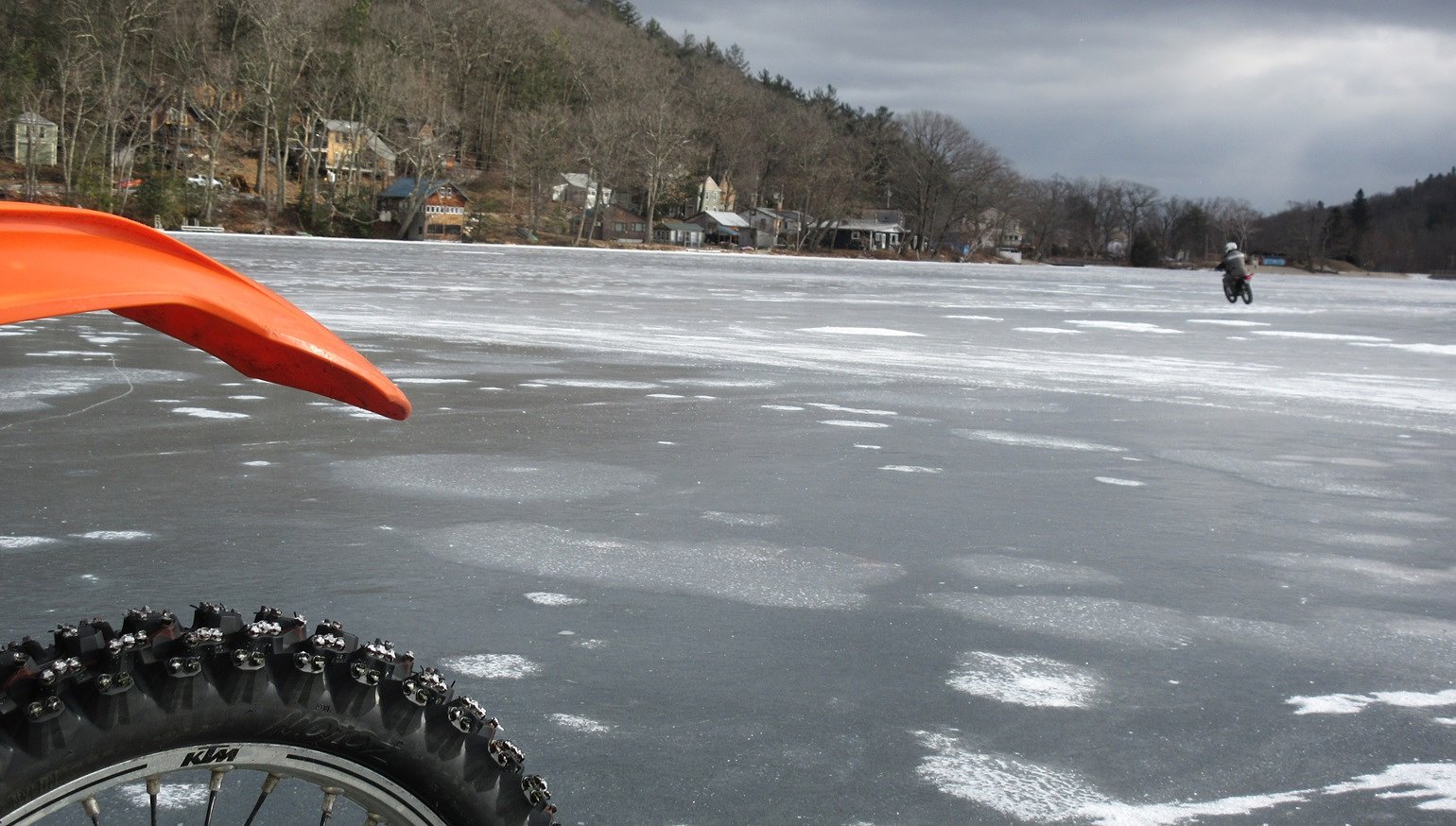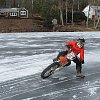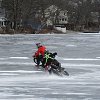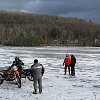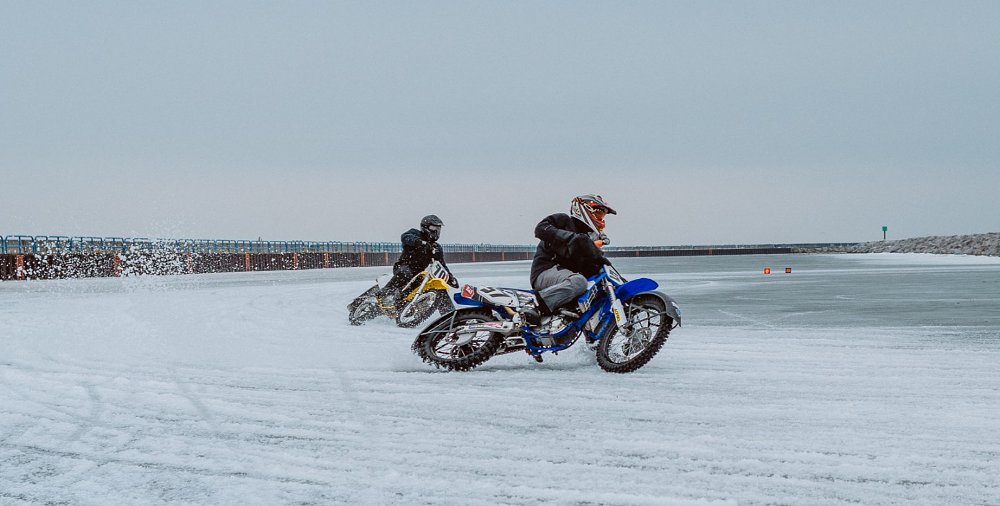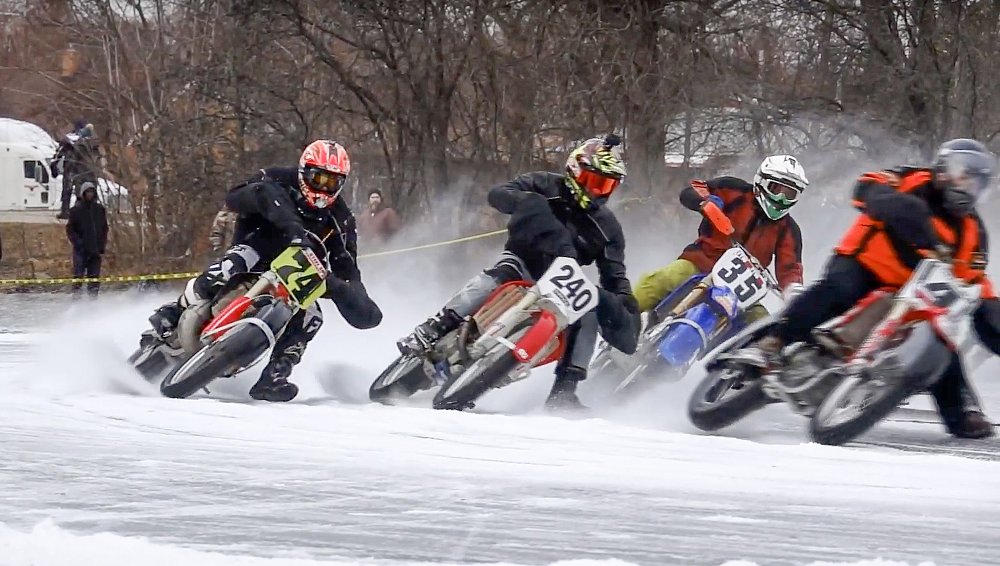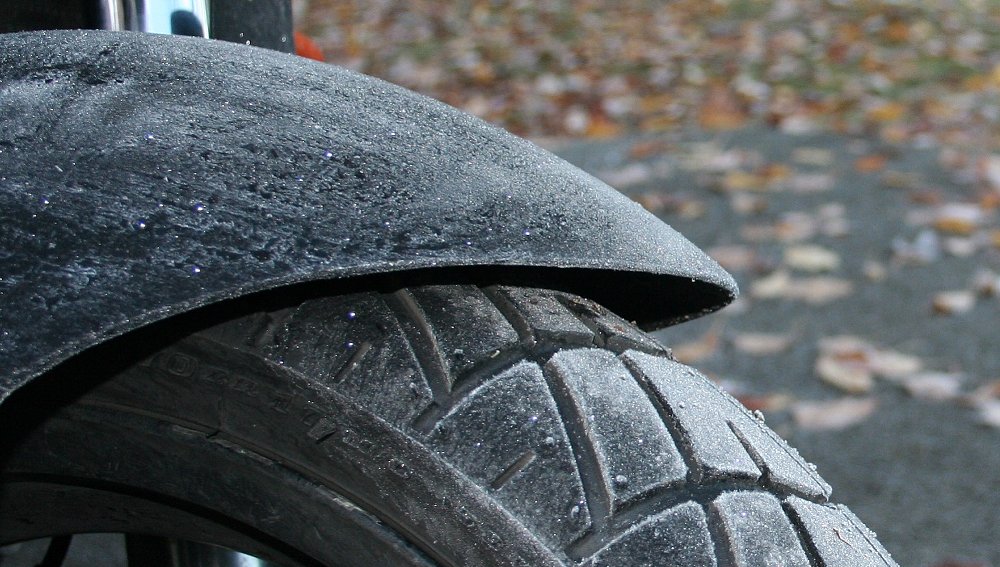There's an old saying, something along the lines of how when pig dances ballet, you're not impressed because the pig is good at it, but rather that the pig is doing it at all. And that brings me to my first-ever experience of ice riding.
Anyone who knows me knows that an ice-covered lake is not my favored environment. It has always been thus. In college, my friends were surprised I took a job further north, expecting me instead to escape to warmer climates. Later, for many years, I happily lived in tropical and sub-tropical locations where snow was an impossibility. I was fine with life on an island where the only seasons were "hurricane" and "regular." But life and opportunities often take us in unexpected directions.
Those life events have deposited me in a place I love, in many ways — except for the long winters. I never fully stop riding. If the roads are free of snow and ice and I have reason to go somewhere in the winter, I'll go on two wheels. But that is just evidence that I'm too stubborn to stop riding, not that I enjoy the cold.
Basically, if I ever ride past you in the winter, just know that the loud whining sound you hear is not a bad bearing, but rather me bearing it badly.

One way northern motorcyclists deal with winter is to find a way to squeeze some fun out of it. That means riding on the ice — something I've never done. It's not like I never knew ice riding and ice racing existed. Like everyone else, decades ago, I saw the scene in "On Any Sunday." For years, I've watched from the warm comfort of my living room as others posted their ice-racing exploits on social media, such as Harley-Davidson Public Relations Manager Paul James (one of those annoying people who seem to ride all kinds of motorcycles, all of them better than I do), who regularly takes advantage of the frigid Wisconsin winters to go ice racing (see below). Several years ago right here at Common Tread, we also published another account of total noobs venturing onto a frozen lake on two wheels for the first time.
So sure, I knew a little about riding motorcycles on frozen lakes, but I'd never experienced it. For one thing, it's not easy to do. You need to be in a climate that provides a solidly frozen lake. You need access to a lake where you can do it. You don't have to do many modifications to a dirt bike or dual-sport — though the right suspension setup will make it more fun — but you need special tires that are really expensive and a pain to mount, and you either have to pay to have hundreds of special screws put in the knobs or else do that work yourself. Plus, you have to actually get off the sofa and leave a heated room on a day when the temperature is 20 degrees F and the wind makes it feel like five degrees below "OMG I'll die if I go out there." All of which made it very easy for me not to go riding on the ice.

Then I recently got a text message from my friend and neighbor (is 40 miles away a "neighbor"?), long-time motorcycle riding instructor and author Ken Condon. For decades, Ken has lived on the edge of a lake in the western Massachusetts hills where it gets quite cold this time of year. Ken is another one of those guys who rides all the bikes and, annoyingly enough, rides them better than I do: street bikes, roadracing, single-track trails, and there's that big, cold lake sitting outside his picture window, so naturally, ice. In his message, Ken said he was inviting a few total-rookie ice riders over on Sunday to give it a try. Would I want to be one of them? I channeled Mary McGee ("Always say 'Yes'.") and made plans to show up.

Ice bikes, ice riders
In the weak, mid-day January sun, we gathered at the edge of the lake outside Ken's garage. Ken and his friend, Paul Duval, co-owner of Cyclesmith Track Days, were the experts. At the other end of the spectrum were us noobs, with a sum total of zero experience on ice, though all of us with a lot of riding experience on more traditional surfaces.
Ken has a Yamaha XT250 he uses for trail riding in the warmer months and he has a second set of wheels with studded tires for ice use. Paul brought his personal KTM ice machine and an air-cooled Honda CRF150F set up specifically for ice duty.
My preparation consisted of watching Ken's videos about ice-riding technique. (The short version is below, and there's a longer webinar answering common questions.)
Though I took a spin on the XT250, the CRF150F, with its smaller stature and more stiffly tuned front suspension, quickly became my favorite. I think I'm safe in saying I didn't monopolize the Honda, but that's only because ice riding is a physical endeavor and I was using muscles that weren't accustomed to heavy duty, so I took plenty of breaks that allowed others to get some time on the CRF.
Surprises everyone tells you about ice that really are true
Truth number one. Everyone tells you that you won't believe how much traction you have on the ice, and everyone is not lying. I was more likely to fall down while walking on the ice to get to the motorcycle than I was to go down on the bike itself. In the few hours of weak afternoon sunlight we had, not one of us went down, either on foot or on wheels. Ken and Paul demonstrated some insane lean angles. It really is a mental adjustment, to go from ice = no traction, the way we think the rest of the time, to ice = insane traction. But once you accept your new reality, it's so much fun.
Truth number two. You might think riding on ice would be stressful, but it really feels like the most relaxed environment anywhere. Unlike the street, there's no traffic to worry about. Unlike the trail, no low-hanging branch is going to rip your face off. Unlike a roadrace course, if you blow a turn, you don't have to worry about whether you have enough runoff space. I can think of no other riding environment that allows and even promotes such free-form riding.

Truth number three. It's a widely accepted fact that practicing different forms of riding makes you a more skilled motorcyclist overall. Because of the relaxed environment I described above, you can experience things like a rear-end slide to help turn the motorcycle without the potential disasters that are part of such maneuvers in other environments.
There was one other surprise from my day on the ice that is not a universal truth at all, but a personal discovery that makes absolutely no sense. Apparently, my brain works in reverse on the ice. My entire riding career, I've been more comfortable with left turns than rights, whether on a roadracing course or the street. When I retired my old leathers, the difference between the left and right knee pucks was remarkable. I naturally assumed I'd be the same on the lake. Not so.
I started out riding an oval turning left, like a flat-track racer. On my third session, I started doing figure eights, just to see how much harder it would be to turn right. Instead, I felt more comfortable turning right. Even the bystanders on the lake shore commented on the difference when I came in. It was the total opposite of my expectation and all my other riding experience.
Why did it happen that way? I don't know. What does it mean? Nothing at all, really. Just one of those quirks of my imperfect skill set.
For better or worse, Ken captured my unsteady progress in the video below. (It's not like I could have outrun him to get away from the camera, in any case.)
If you get the chance...
As I mentioned before, riding on the ice is not easy or cheap for the vast majority of us. But if you're like me and you're lucky enough to know someone who has already overcome the obstacles and invites you to come along for the ride, say yes. Like riding off-road, ice riding is a learning experience for us street riders as we can explore lean angles, sliding, using throttle control to steer the motorcycle with the rear end, and other techniques you can't responsibly practice on your daily commute in city traffic.
Now if you'll excuse me, I need to go thaw my toes.

 Membership
Membership

